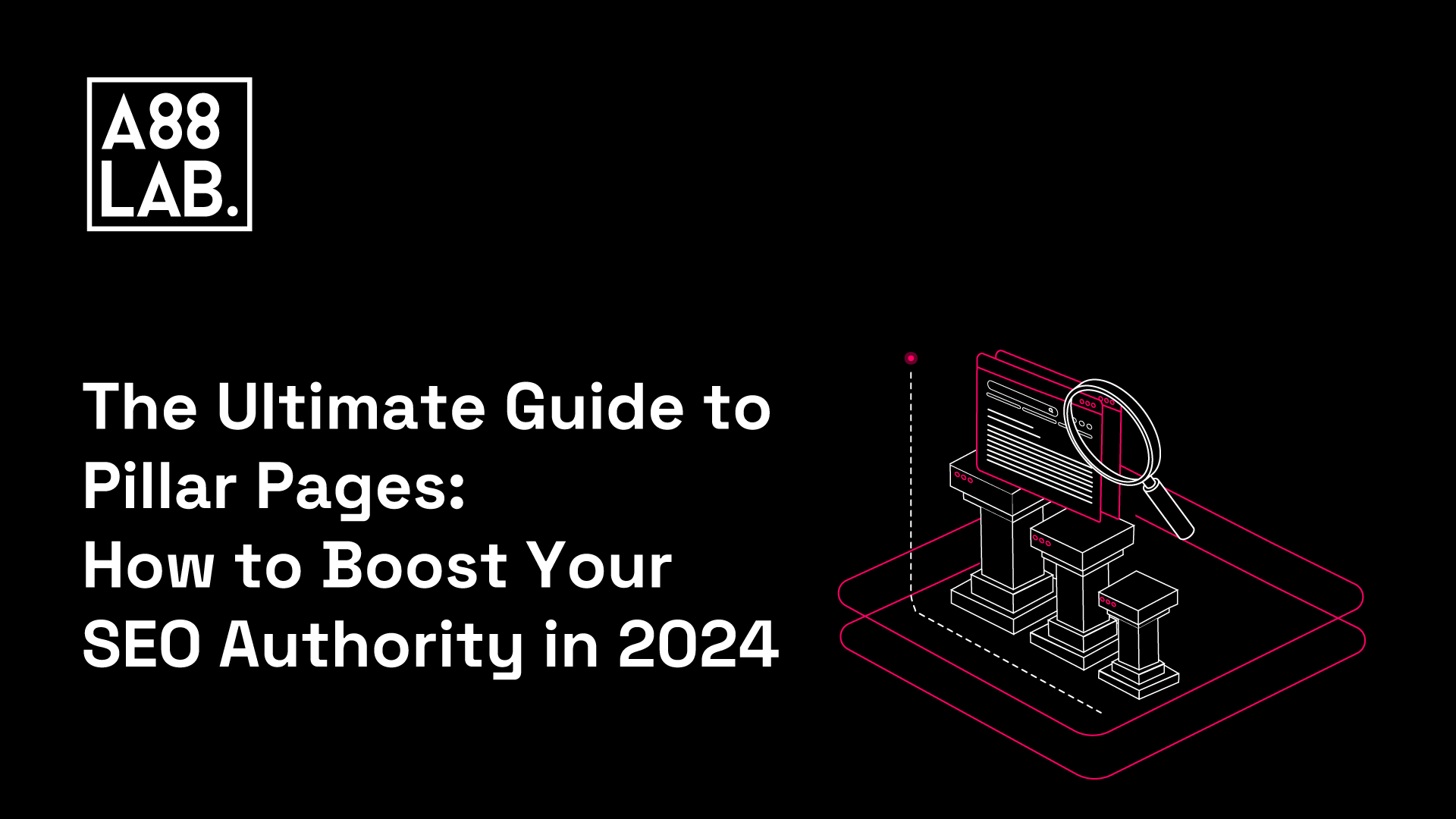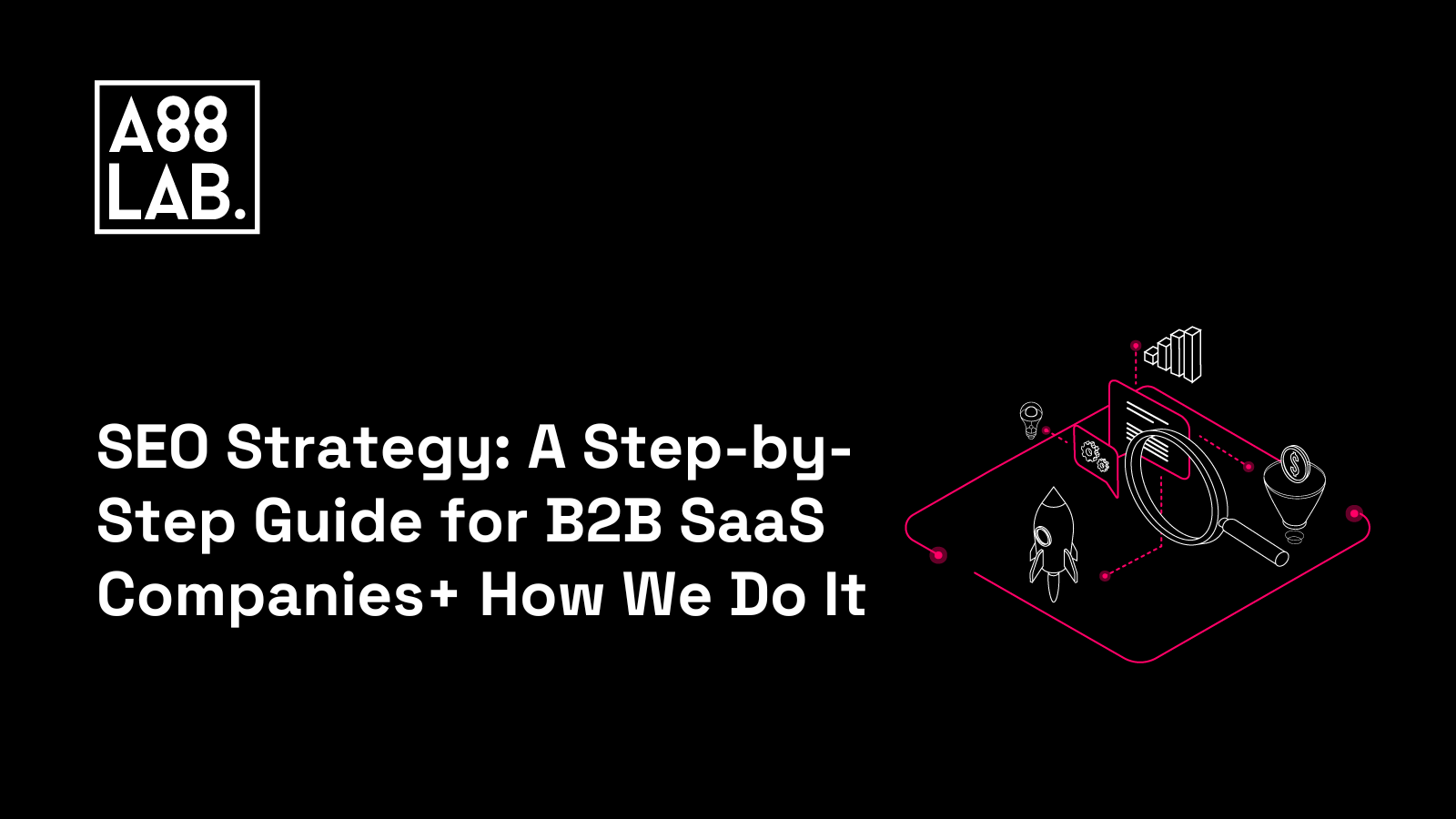Pillar pages are essential for building a strong SEO foundation. They offer a comprehensive overview of a topic and link to detailed, related content pieces. This structure not only helps search engines understand your content but also creates a better user experience, guiding readers through a well-organized network of information. But let's break it down:
What is a Pillar Page?
So, what's a pillar page anyway? Think of it like the foundation of a house. It’s a big, solid structure that supports everything else — but instead of bricks and mortar, it’s built with content. A pillar page gives a broad overview of a subject, like Demand Generation, and then links out to all the detailed, related content pieces, which are like the rooms branching off from that foundation.
In simpler terms, a pillar page is the main hub where you cover a topic comprehensively. It’s not just for users either — search engines love it because it’s well-organized and easy to crawl. The more logically structured your content, the better Google can understand it, and the higher you’re likely to rank.

Pillar Page Meaning in SEO
Why do pillar pages matter for SEO? In a nutshell, they create a network. By having a central pillar page that connects to lots of related content (topic clusters), you're basically telling search engines, “Hey 👋, I’m an expert on this subject.” This interconnected web signals authority, which helps boost your SEO rankings.
And it’s not just about pleasing search engines — it's also about creating a journey for your readers. They get the overview on the pillar page, then explore different subtopics as they need. It’s like building a path that’s easy to follow, making both Google and users happy.
Pillar Page vs. Landing Page: What’s the Difference?
Is a pillar page the same as a landing page? Nope, not at all. Imagine a landing page as a pop-up store — it’s there for a specific purpose: to convert visitors, capture leads, or push a sale. It’s focused, short, and action-driven.
A pillar page, on the other hand, is more like a detailed museum exhibit. It’s meant to inform and educate, not just sell. Its goal is long-term — build trust, show expertise, and bring value over time. Landing pages are conversions-driven, while pillar pages are more about long-term SEO and providing comprehensive information on a specific topic.

Pillar Page vs. Cluster Pages
So far we mentioned multiple times pillar pages and cluster pages, but to understand them better we need to have a closer look at the differences.
-
Pillar Pages: These are the main guides — they cover a broad topic comprehensively, giving you an overview and linking out to more specific content. For example, pillar page could be "Product-Led Growth for B2B SaaS".
- Cluster Pages: Think of these as the “close-ups” — each one focuses on a specific aspect of the broad topic covered by the pillar page. Together, they form what’s known as a pillar-cluster model. For a cluster page example, think of "Marketing-Led vs Product-Led Growth: Which Strategy is Better for Scaling Your SaaS?"
You see, this model improves SEO by creating a structured content system. You show Google that not only do you have a big overview on a topic, but you’ve also got all the nitty-gritty details — and everything is connected.

Pillar Page Examples and Types
Not all pillar pages are created equal, and that's the beauty of it. Depending on your audience's needs and the depth of your content, pillar pages can take different forms. Some are designed to be comprehensive, all-in-one guides, while others are structured more like a library of resources. Let’s talk about some examples. There are three main types of pillar pages you could create:
10X Content Pillar Page
Imagine making a piece of content that’s 10 times better than anything else out there. It’s super comprehensive and aims to blow away any other content on the subject.
A 10X content pillar page isn’t just about volume, it’s also about quality, depth, and creating something so valuable that it’s head and shoulders above the competition. Picture a guide that not only explains a concept but also provides tools, templates, case studies, and deep dives — that's 10X.
Consider our Demand Generation pillar page. It serves as a complete resource, providing an overview of the key concepts while offering links to more detailed discussions on related topics like inbound marketing and specific advertising strategies. This interconnected content not only keeps users engaged but also signals to search engines that our site is a comprehensive source on the subject.

The goal of our pillar page is to rank for demand generation-related topics. So, it acts as a 101 guide to demand generation, while the cluster content dives into a specific aspect of demand generation.
The Hub Pillar Page
This is like a central library for a topic. It’s not super detailed itself but links out to all the in-depth resources.
Think of it as an organized index that’s meant to direct readers to more specific articles. For example, a “Complete Guide to Marketing Strategies” could be a hub pillar, linking out to detailed cluster pages like “Social Media Marketing Tips,” “SEO Best Practices,” or “Content Marketing for Beginners.”
Pages like knowledge hubs, resource centers, or academies often serve this role. Apollo’s Academy is a great example—it organizes valuable content into structured paths, so you get the big picture without getting bogged down in one place.

The Hybrid Pillar Page
It’s a mix of the first two — some depth, but also serves as a hub.
The hybrid approach makes sense if you want the best of both worlds: providing some substantial content on the main page while also guiding readers to more specialized posts. It works really well for complex topics that benefit from a layered approach.
Why are Pillar Pages Important for SaaS SEO?
Pillar pages matter for SEO, especially in the SaaS world where topics are often niche, and you want to be seen as the go-to source.
First, they help with site structure. Imagine Google crawling your site — pillar pages make it easy for search engines to find and understand the content. The clearer the structure, the better Google can rank your pages.
Second, they improve user experience (UX). A good pillar page is like a well-planned road trip — it guides users to the destination without detours. Easy to navigate, no fluff, and gets them exactly what they need.
Third, pillar pages help reduce bounce rates. If someone lands on your site and finds everything they need in one place, they’re more likely to stick around, click on links, and explore further. It’s like walking into a library and realizing that all the books on a subject are neatly organized in one section — why go anywhere else?
Finally, it helps build Topical Authority. Google wants to know that your content is reliable. A well-done pillar page, supported by detailed cluster content, signals expertise — it shows that you’re not just skimming the surface but diving deep into a topic. And when it comes to SEO, being an authority is key. Authority equals trust, and trust equals rankings.
6 Best Practices for Creating an Effective Pillar Page
To build a pillar page that actually works, you need to get practical. Forget the fluff, forget just stuffing it with keywords — this is about creating something that genuinely adds value, both for your readers and for search engines. It’s about being smart with your content, making sure it’s structured in a way that guides your audience smoothly, and giving them reasons to stay, engage, and trust your expertise. Here’s how you can do it with these six tactics that are all about building depth, engagement, and authority.
1. Choose the Right Topic
Pick a topic that’s core to your business and relevant to your audience. You want something that people are curious about, not something as dry as stale bread. If you’re in project management category, you would like to avoid a topic like "Project Management". Yes, it has HUGE traffic volume, BUT it's also VERY competitive, and you'll have to deal with folks like Asana, Click Up, Monday.com etc. a pillar on “Project Management for Remote Teams” is great. It’s relevant, timely, and can branch into tons of subtopics.
Don’t just choose a topic because it sounds cool or trendy. It needs to address real pain points your audience has. If you’ve heard your customers asking the same question over and over again, that’s a good sign it could make a strong pillar page topic.
2. Do Your Keyword Research
Identify keywords for both the pillar and cluster content. You want to know what questions your audience is asking, and make sure you have the answers. Tools like Ahrefs or SEMrush are your friends here.
Start by finding broad keywords that could represent your pillar page, then drill down into the long-tail keywords for your cluster content. Think of it like building a tree: the pillar page is the trunk, and the cluster pages are the branches.

3. Prioritize Hight Quality Content
Quality over quantity — always. Remember, you’re creating a resource, not just stuffing keywords. Think less AI-generated fluff and more genuinely helpful insights. Speak from experience.
Picture yourself talking to a friend who knows nothing about the topic. How would you explain it to them without boring them to death or overwhelming them with jargon? That’s the tone you want.
4. Don’t Forget Internal Linking
Make sure all your cluster content points back to the pillar page and vice versa. Internal linking is like a spider web — it keeps everything connected, and it makes it easy for Google to crawl your site.
It’s also about user experience. A visitor on your pillar page should feel naturally guided to click on related content. If you’re covering “Remote Project Management Tools” and mention time tracking, link to a cluster page that covers time-tracking tools in detail.
5. Include Quality Designs and Strong CTAs
No one likes a wall of text. Break it up with visuals, use strong calls to action, and keep things interesting. You want your page to look like an engaging experience, not an academic paper.
Use visuals that add value. Flowcharts, diagrams, infographics — all of these can make complex information easier to digest. And don’t forget about CTAs. A good pillar page should naturally lead readers to the next step, whether that’s downloading a resource, reading another article, or contacting you.
6. Promote Your Pillar Page
Building pillar pages is a great start, but strong distribution is key to making a real impact on SEO. Even the best content takes time to rank high unless we actively leverage all our distribution channels to showcase it to the world. This approach is essential for gaining quality backlinks, driving initial traffic, and building awareness.
Once it’s live, share it. Use social media, ads, whatever works for your audience. Pillar pages are the ones you should be proud of — they’re the face of your content.
You could even run a campaign around it. Tease the content before it goes live, create snippets for LinkedIn, or make a short video summarizing what people can expect. Get creative — after all, if your pillar page is 10X content, it deserves more than a quiet launch 🎉.
Pillar Page Templates
Building a pillar page isn’t rocket science, but there is a format that works. Start with a strong title and intro that clearly explain what the page covers. Use a mix of paragraphs, bullet points, visuals — whatever best conveys the info. Include internal links to cluster content, and end with a solid CTA to guide users on what to do next.
Think of the template like the backbone of your content. You want an intro that hooks people, sections that naturally flow from one to the next, and a conclusion that leaves them wanting more — plus links to get them there.
Interested in Building a Pillar Page for your SaaS Product? Let's Chat.
Building a pillar page isn’t just a content strategy — it's a way to establish your brand's expertise, drive consistent organic traffic, and give your audience real value. We’ve seen firsthand how effective a well-constructed pillar page can be for our clients. In fact, we've helped many B2B SaaS companies see their content rise to the first page of Google, and more importantly, connect with the right audience in a meaningful way.
If you’re thinking about building a pillar page and want to get it right, we're always here to share our experience. Whether you need a second pair of eyes or a partner to help bring your vision to life, we're happy to chat, just drop as a message 💌.
Conclusion
Pillar pages are a powerful way to improve your SEO, create a solid structure, and give users a comprehensive experience. Whether you go for a 10X content page, a hub, or a hybrid, the key is making sure it’s well-organized, informative, and valuable.
SEO isn’t just about traffic, it’s about providing content that truly helps your audience. Nail your pillar page, and you’re not just ranking — you’re converting.
And remember, a pillar page isn’t a “set it and forget it” kind of deal. Keep updating it, keep linking back to it, and make it better over time. The more value you pack in, the more you’ll see your efforts pay off in the long run.
.png)


